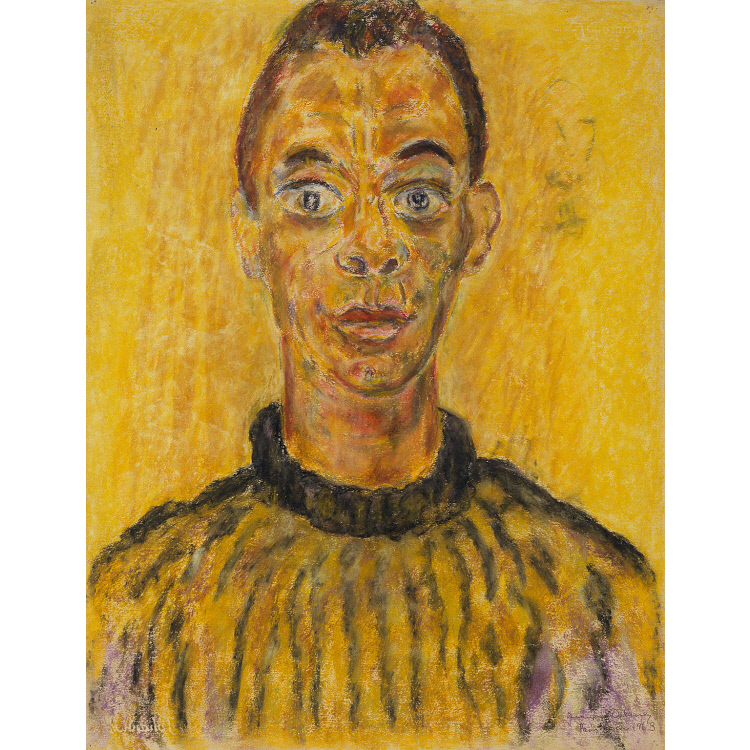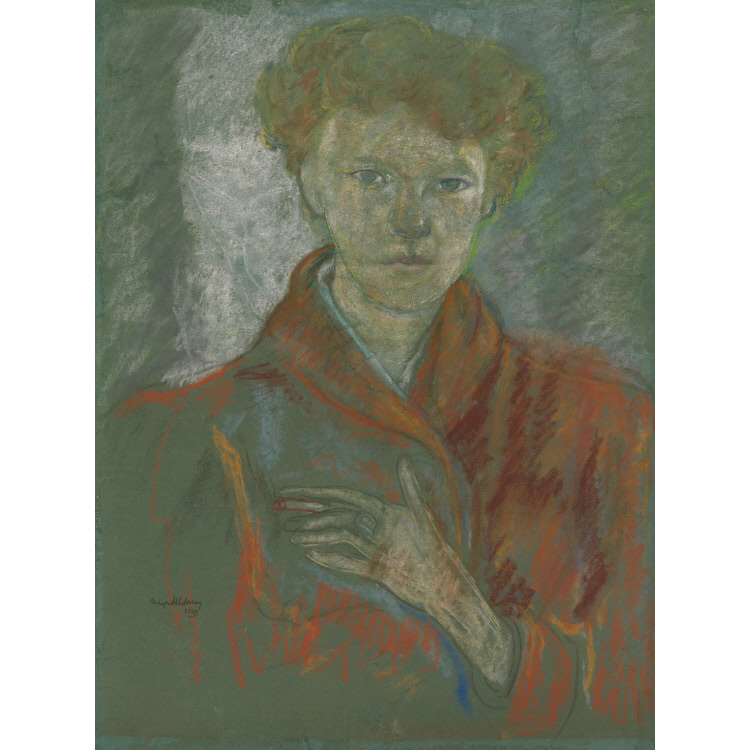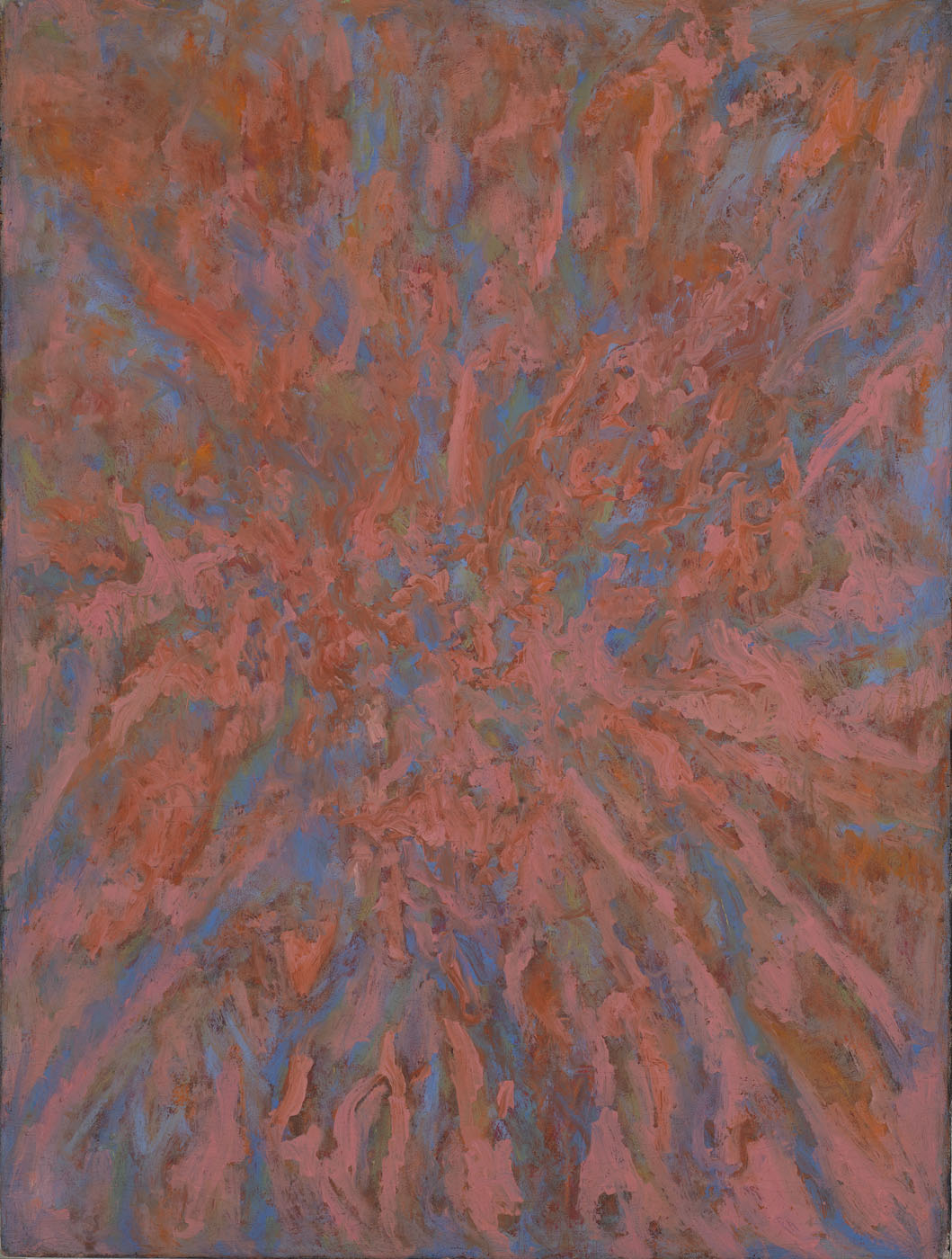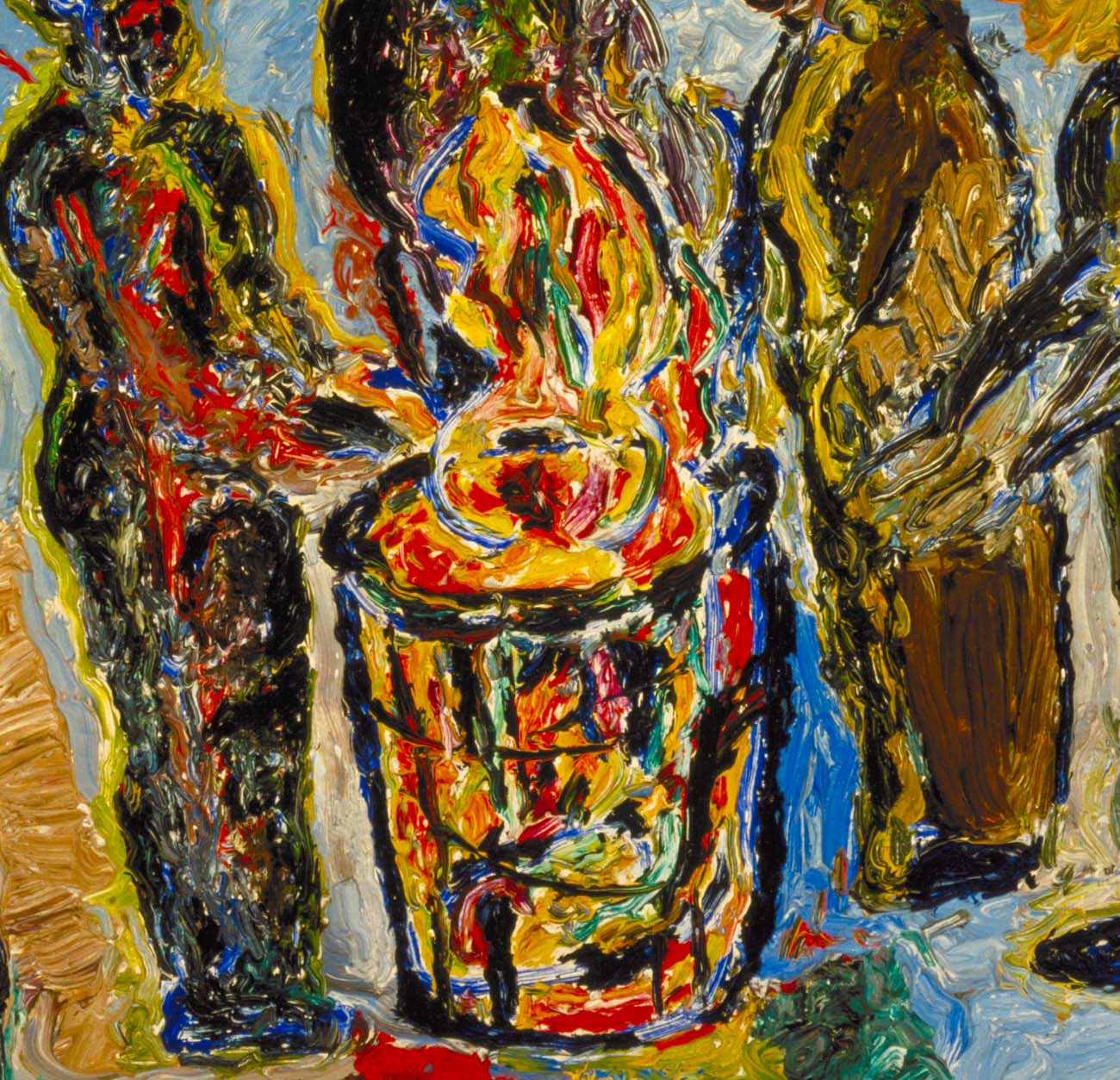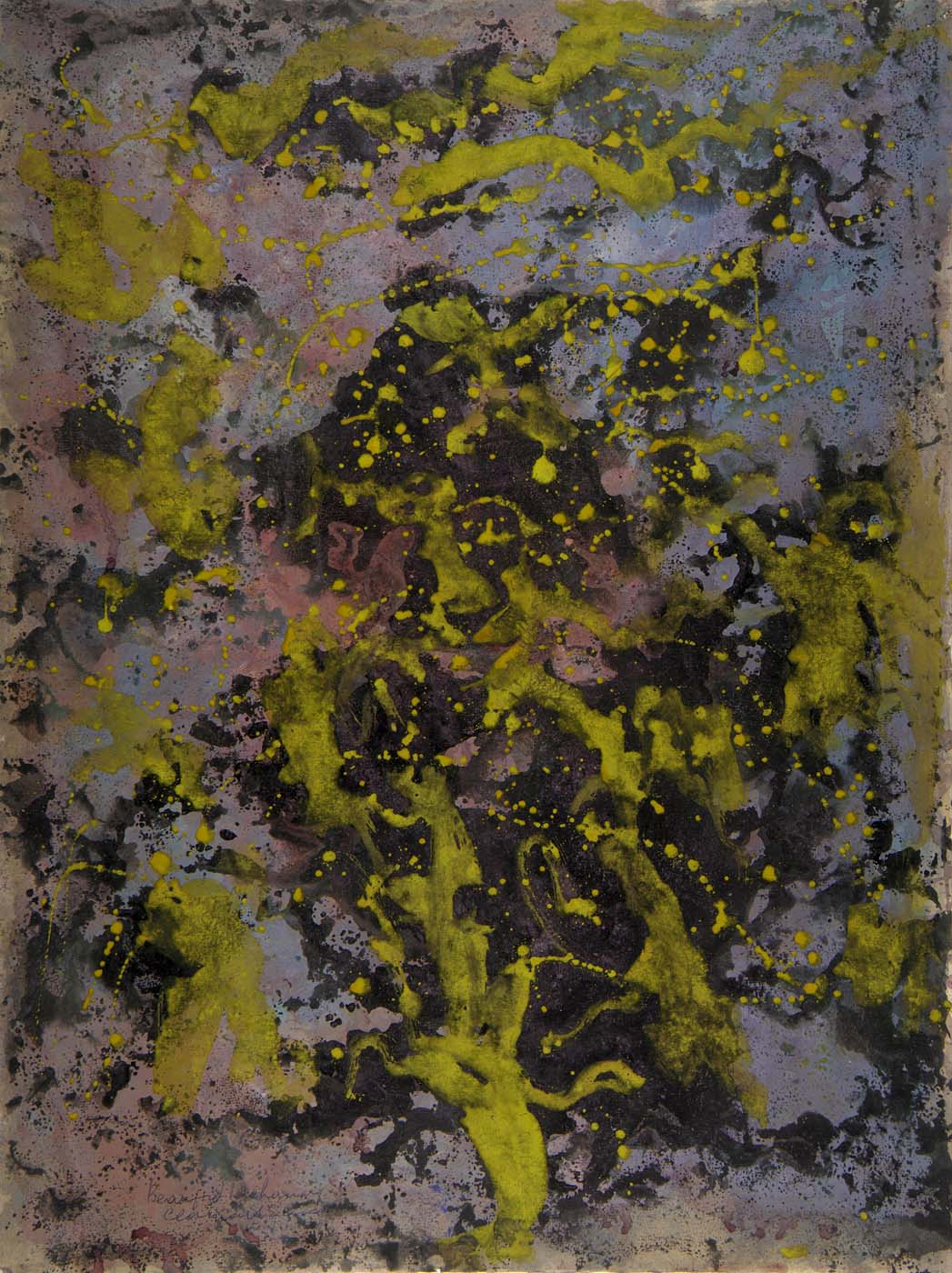Beauford Delaney
"The abstraction, ostensibly, is simply for me the penetration of something that is more profound in many ways than rigidity of a form. A form if it breathes some, if it has some enigma to it, it is also the enigma that is the abstract, I would think." — Beauford Delaney, quoted in Richard A. Long et al., Beauford Delaney: A Retrospective (New York: The Studio Museum in Harlem, 1978), n.p.
For more than three decades Beauford Delaney lived and worked in and around Paris where he earned the title "dean of American Negro painters living abroad." In 1945, when the writer Henry Miller published an article celebrating Delaney's art, he referred to his painter-friend as "the amazing and invariable" Beauford Delaney. Delaney was probably the most popular and best-known contemporary African-American artist then living abroad.
Delaney was born in Knoxville, Tennessee, in 1901 to a Baptist minister, Samuel Delaney, and his wife, Delia Johnson Delaney. Beauford, along with his younger brother, Joseph, showed remarkable skill in drawing during his childhood. Lloyd Branson, a local elderly white artist in Knoxville, gave lessons to Beauford, and encouraged him to study art in Boston. In 1924, when Delaney was sixteen, he moved to Boston and remained there for five years. Although he claimed to have been largely self-taught, Delaney attended classes at the Massachusetts Normal Art School and the South Boston School of Art, and enrolled in evening classes at the Copley Society. While working at various jobs to support himself, Delaney frequently visited the galleries at the Boston Museum of Fine Arts and the Isabella Stewart Gardner Museum. In Boston, he immersed himself in the art of the Old Masters, as well as nineteenth- and twentieth-century examples.
In 1929, Delaney moved to New York City; he lived first in Harlem and later moved to Greene Street in Greenwich Village. In 1930 Delaney held his first one-man show at the 135th Street branch of the New York Public Library, and in 1938 mounted a one-man exhibition at a gallery in Washington, D.C. Delaney's early works were primarily portraits executed in pastels, and he exhibited frequently in the Harmon Foundation shows during the 1930s and 1940s. In 1948, by the time Delaney, along with Ellis Wilson, held an exhibition at the Artist's Gallery in New York, he figured prominently in art circles. His paintings of the late 1940s consisted largely of street scenes and interiors executed in a thick, impasto technique with broad areas of pure bright colors. While living in New York, Delaney met and sketched many prominent African Americans of that period. To support himself, Delaney taught art part-time at a progressive art school in Greenwich Village,and did custodial work at the Whitney Museum. Following Delaney's move from Harlem to Greene Street in Greenwich Village, he painted that street and neighborhood repeatedly. Greene Street became a symbol to Delaney as Mont St. Victoire had been to Paul Cézanne.
During the early 1950s, Delaney's paintings became progressively nonrepresentational. He retained a thick, impasto technique, but his style was more closely associated with the abstract expressionism of the New York School of painters. Delaney continued to develop his abstract expressionist style between 1950 and 1951, when he received a fellowship to the Yaddo Art Colony near Saratoga Springs, New York. Yaddo probably inspired Delaney to travel to Europe and visit the "new Rome", which was much talked about at Yaddo. A benefactor financed Delaney's first trip to Europe, and his plan was to visit Rome with a stop-over in Paris. Upon his arrival in Paris, however, Delaney was so enchanted with the city that he decided to settle there. Delaney lived in Paris for the remainder of his life.
The majority of Delaney's early paintings, which he left behind in his New York studio, have been lost. He is, however, represented in the collections of numerous artists, writers, and musicians with whom he associated during the 1930s and 1940s. Delaney was able to support himself financially in Paris through sales of his paintings, subscriptions from friends, and a grant from the National Council of the Arts in 1969. Three main forces contributed to the development of Delaney's style: the techniques of Vincent Van Gogh, the color of the Fauves, and the design principles of abstract expressionism. From his early pastel portraits in Boston and New York, to the street scenes of New York's Greenwich Village, and finally to the development of a nonrepresentational style, Delaney's works were never merely derivative of previous styles. His paintings possess a personal spontaneity that distinguishes him as one of the foremost abstract expressionists of hisgeneration. By 1971 Delaney's heavy drinking and bohemian way of living had begun to take a physical and mental toll. He suffered an emotional breakdown. Not unlike William H. Johnson, Delaney was mentally incapacitated during his final years in Paris. He died on March 26, 1979, in an asylum, completely oblivious to his surroundings.
Prior to moving to Paris in 1953, Delaney lived on Manhattan's Lower East Side, an environment from which he delighted in selecting subjects for his paintings.
Delaney's thickly applied paint and the use of vivid hues also recall the techniques of the French Fauves, who painted at the turn of the century. Indistinct, raceless, Delaney's street people strike an ironically poignant note for a contemporary audience while also recalling the tradition of can fires among the urban poor and homeless.
Regenia A. Perry Free within Ourselves: African-American Artists in the Collection of the National Museum of American Art (Washington, D.C.: National Museum of American Art in Association with Pomegranate Art Books, 1992)
